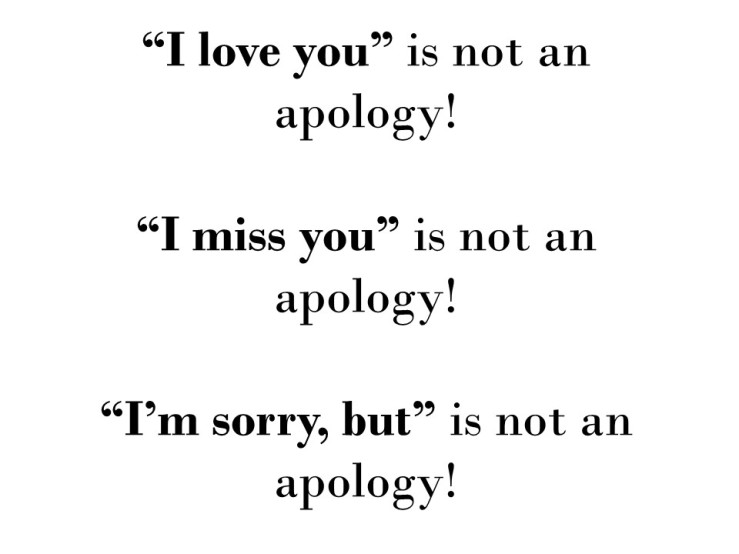People the world over seem to struggle with the how to take accountability for their actions in their relationships. One of the ways in which this is evident is how poorly people apologise when they have wronged someone. Most people think that saying something positive or simply adding the word “sorry” allows them to parade justifications, defenses or additional attacks as an apology. Today, I am drawing from my experience with these non-apologies to share my three steps to a genuine apology.
Step 1: Use the words “I’m sorry” or “I apologise”

An apology starts with the use of the words “I’m sorry” or “I apologise” spoken with remorse, respect and repentance but it does not end there..
Step 2a: State what you are apologising for
Saying I’m sorry is just the start. People who truly want to make things right acknowledge exactly what it is they broke in the first place. So, you want to clearly and explicitly state what exactly you are sorry for. Not only is this validating for the person you have hurt, but it also opens up an opportunity for learning through honest conversation. Avoid the words “but”, “however” and variations of these at all cost. These words cancel everything that gets said before them and from the moment they leave your mouth, your apology is null and void.
Step 2b: Do not dictate the response to your apology.
“It’s fine to be upset, but you can’t hold onto being upset if I apologise. I’m not saying apologising solves everything but it’s a start.”
I got told this by someone that hurt me considerably and I was still waiting for them to apologise. What is wrong with this statement? The person who is in the wrong is dictating to the person that they have hurt how they need to respond to their apology and when they are meant to heal. Friends, if you have done something to hurt another soul, you do not get to decide when they should get over it and how they respond when you apologise! You do not get to decide how hurt someone gets to be by your actions.
If the person feels that you have still not made amends and you disagree, the best thing to do is NOT to keep insisting that you have, but to rather apologise again and this time do so by executing step 1 and 2 above. Chances are the first time you “apologised” you either did not use the right words, you peppered the apology with buts and howevers, you did not genuinely express awareness of what you have broken or, worse, you simply insisted that you had done nothing wrong.
Step 3: Do the work to fix your behaviour!
It is also useful to remember that having your apology accepted is not the end goal. What is the ultimate goal of apologising? To keep the relationship and get granted an opportunity to change the behaviour that caused harm in the first place. This is how you make the apology tangible and real. You invest time and emotional labour towards working on whatever you did that led to you needing to apologise in the first place.
When in doubt about what to do, simply ask the person what they need from you to make things right and how you can ensure you do not hurt them in this way again. This is what people who genuinely feel remorse do. They are consumed by their desire to fix things and keep trying until they succeed. I am not saying here that this is not going to take time, or that you will not make mistakes again, but it cannot be and should not be the exact same mistakes over and over again if you are genuinely doing the work.
So please, DO THE WORK! That is what counts most.
Great post 😁
LikeLike
Amazing! 👏🏾😊
LikeLike